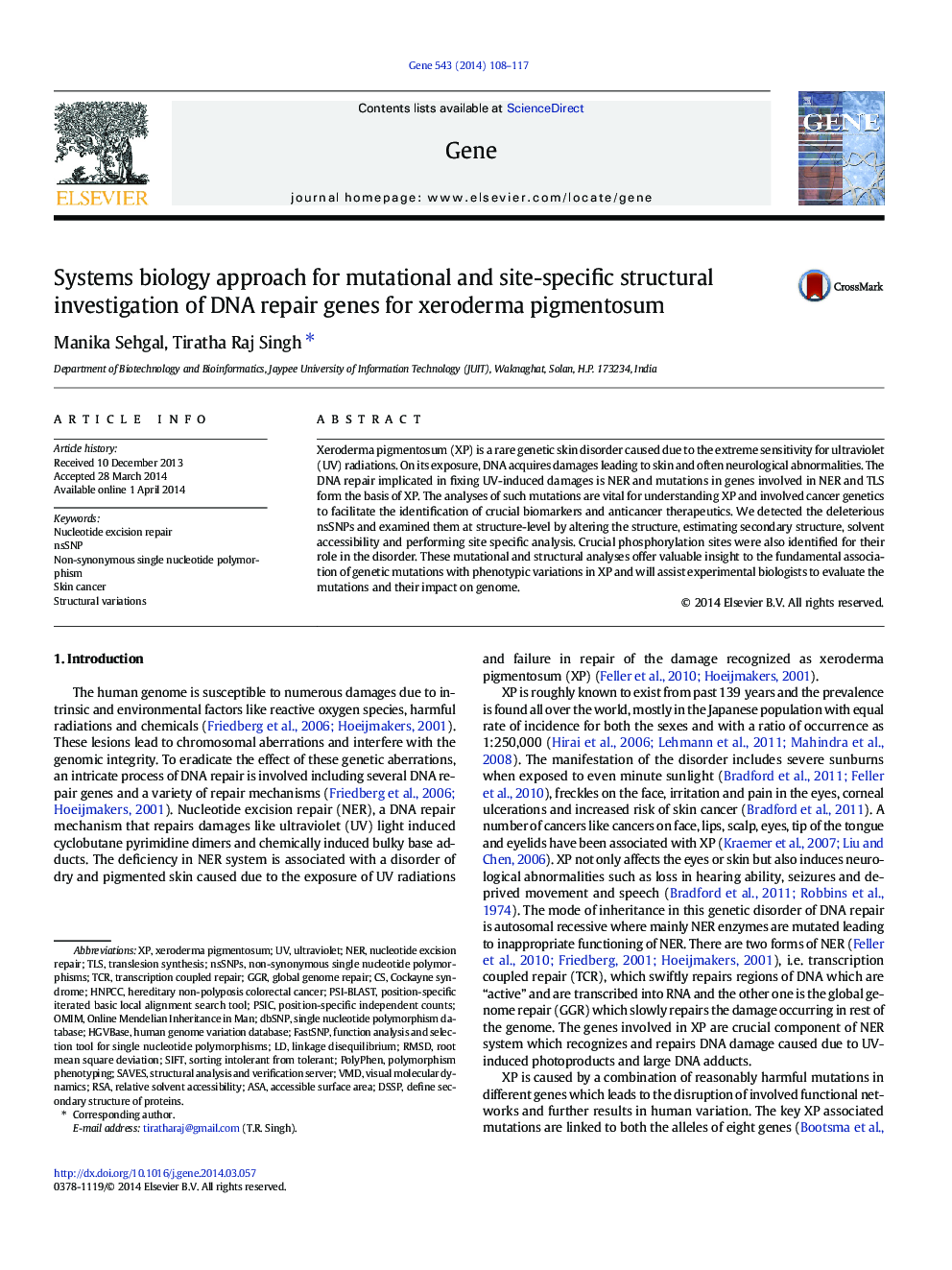| Article ID | Journal | Published Year | Pages | File Type |
|---|---|---|---|---|
| 2816356 | Gene | 2014 | 10 Pages |
•Deleterious mutations and their phenotypical consequences in 8 DNA repair XP genes.•Genetic statistical study comprising of LD and haplotypes.•Detection of crucial phosphorylation sites associated with XP.•Site–specific assessment by mapping mutations onto the obtainable structures.•A pathway model for XP and simulation studies.
Xeroderma pigmentosum (XP) is a rare genetic skin disorder caused due to the extreme sensitivity for ultraviolet (UV) radiations. On its exposure, DNA acquires damages leading to skin and often neurological abnormalities. The DNA repair implicated in fixing UV-induced damages is NER and mutations in genes involved in NER and TLS form the basis of XP. The analyses of such mutations are vital for understanding XP and involved cancer genetics to facilitate the identification of crucial biomarkers and anticancer therapeutics. We detected the deleterious nsSNPs and examined them at structure-level by altering the structure, estimating secondary structure, solvent accessibility and performing site specific analysis. Crucial phosphorylation sites were also identified for their role in the disorder. These mutational and structural analyses offer valuable insight to the fundamental association of genetic mutations with phenotypic variations in XP and will assist experimental biologists to evaluate the mutations and their impact on genome.
Graphical abstractFigure optionsDownload full-size imageDownload high-quality image (120 K)Download as PowerPoint slide
